Project Description
A large distributor of electronics had made 18 acquisitions in a short time and become a global distributor. Combined with organic growth and the concurrent increase in vendors, customers, and other business partners, this overwhelmed their information systems and their ability to interoperate across their enterprise.
The enterprise logical model is maintained in a data modeling repository, and is used to painlessly initialize the data architecture for any system development or database implementation project, and ultimately, to generate the database directly from the model. Chateaux went through a contact management project with the developers to show how data architecture makes projects start faster, finish better, and stay aligned with the enterprise. The new CIO resisted the temptation to spend all his effort jumping in and fixing things; rather, he commissioned a set of models that provide consistent and clear guidance. He is not blindsided by simple sounding projects that explode in scope, due to hidden data issues. When multiple projects are proposed that focus on small parts of the same thing, he can push for a single solution. A data service hub, based directly on the enterprise logical model, is now being proposed to replace a myriad of difficult to maintain, peer to peer interactions.
An enterprise data architecture project can run for years, pursuing perfection. Chateaux’s philosophy is that an architecture should be put into use when it is “good enough”, and then adjusted over time. Our experience allows us to quickly build a model and to know when it is good enough to use. To paraphrase General George S. Patton: “a good plan, violently executed, is far better than a perfect plan that sits on the shelf”. These models, covering the entire information content of the enterprise, and their initial uses were completed by Chateaux in four months.






